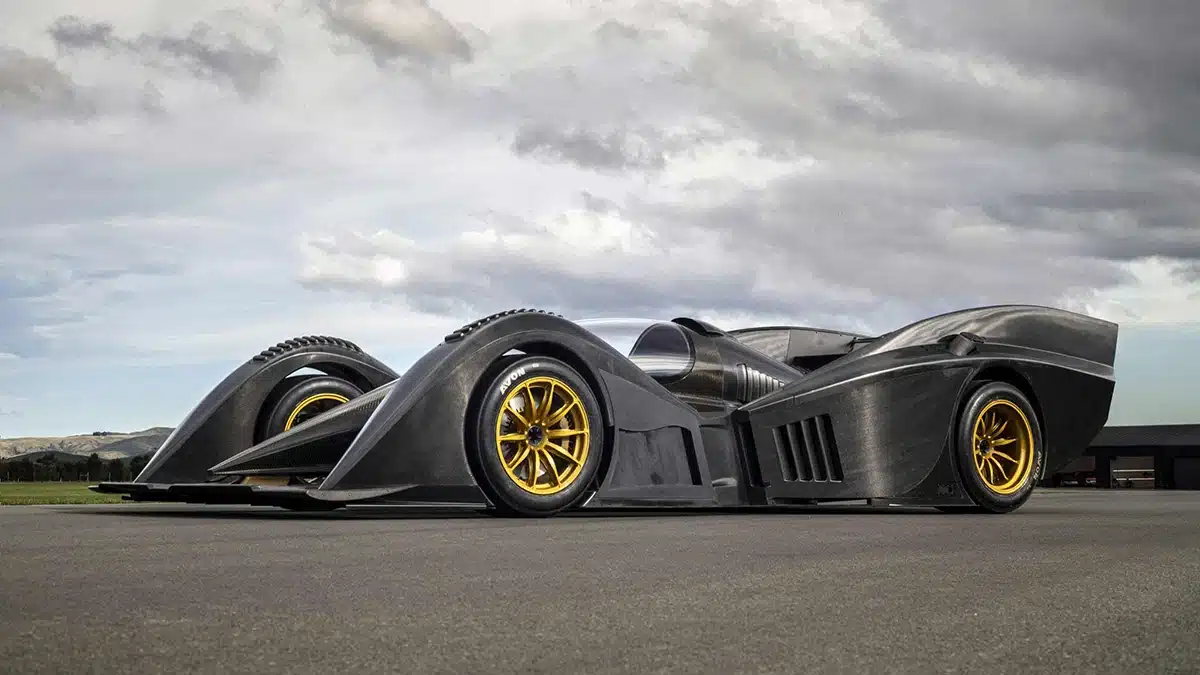Fire up the flux capacitor, we’re about to take you back in time. The date is March 4th, 2014, the place is the Geneva Motor Show and Maserati has just unveiled a stunning new concept car called Alfieri.
This two-by-two seater grand tourer prototype was relevant for many reasons. It was created to mark 100 years of Maserati and dictate the future of the brand’s design DNA. But it also took its name from Alfieri Maserati – the most prominent of the Maserati brothers – who founded and led the brand for the first 18 years but died aged 44 from liver complications following an accident.
Maserati believe that the Voghera-born man could have become a household name and as his true potential couldn’t be realised ahead of his early death, they’ve stuck his signature on the rear as the ultimate homage.
Unlike many radical concepts, Maserati has every intention to put the Alfieri into production. Eventually. At the time of its unveiling, the car was scheduled to go into production in 2016, however, in light of the current SUV craze, the Levante jumped the queue and took its place to help Maserati secure a slice of the SUV action.
This means that we’re unlikely to see the Alfieri in showrooms until 2020 now. Life is cruel.
The Alfieri was revealed as a fully-functional prototype though, so what was actually under the skin?
Sitting on the same chassis as the GranTurismo MC Stradale, the Alfieri was driven by a raucous 4.7-litre naturally-aspirated V8 engine, mated to a six speed semi-automatic gearbox.
Power output was impressive, producing up to 460bhp when revs are pushed to 7,000rpm. It also could turn out up to 520Nm of torque at 4,750rpm. Stopping power came courtesy of carbon ceramic disc brakes pinched directly from the GranTurismo MC Stradale, combined with blue Brembo brake callipers.
Maserati later confirmed that the car would be available with three different V6 engines too, boasting 410-, 450- and 520bhp, while a second V8 with 560bhp and a convertible version would also join the line-up over time.
Stylistically, the car’s design was sportier looking than the GranTurismo and represented the true essence of the brand, drawing influence from other 2+2 Maseratis from the past, such as the 1957 3500 GT, the 1959 5000 GT and the 1969 Indy.
Designers were given a blank canvas to devise the concept and one of the main sources of inspiration was Maserati’s Pininfarina-designed A6 GCS-53.
The long, low nose follows on from contemporary Maseratis, while the vertically split grille leaves the two concave sections seemingly floating mid-air.
The characteristic brow on the front headlights is repeated at the rear on the two exhaust tail pipes, complimented by the three-dimensional tail lights. The wheels – 20-inch at the front, 21 at the rear – were specially designed for the Alfieri concept with integrated decorative spokes that echo classic spoke wheels from the 1950s.
The interior was intentionally minimalist and uncluttered with a clean organic two-tone design built around a central TFT screen while the futuristic seats integrate influence from the racing bucket seat of the 50s.
Design and technology moves fast in the automotive world and with a six-year gap between concept and production (if there are no further delays), it will be interesting to see just how much of this concept actually makes it into the production car in 2020.
For more articles like this, receive our weekly e-newsletter, including partner deals and all things motoring, register your email below.
Please note: You cannot subscribe to Smart-Motoring unless you put a tick in the checkbox below to indicate have read and agreed to our privacy policy.










Leave a Reply
You must be logged in to post a comment.